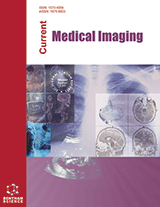
Abstract
Introduction: Mesothelioma is an insidious neoplasm that develops from mesothelial cells. About 80% of mesotheliomas originate in the pleural cavity. Other sites where it has been reported are the peritoneal cavity, tunica vaginalis, and the pericardium.
Case Presentation: A 45-year-old female complained of abdominal distention and pain for three months. There was a significant weight loss of approximately 15 kg in the past three months, and there was no family history of any malignancy, tuberculosis, substance abuse, or asbestosis exposure. Physical examination revealed signs of muscle wasting, loss of subcutaneous fat, and hollowing of the eye sockets. There was pitting edema in the bilateral lower limbs; per abdomen examination revealed abdominal distension with umbilicus in the midline. No visible peristalsis or dilated veins were seen all over the abdomen. Hernial sites were normal. Gross ascites were present, and no organomegaly, definitive mass, or lump was palpable. The dull note was heard all over the abdomen, and fluid thrill was noted on percussion. Bowel sounds were normal on auscultation. The ascitic fluid examination revealed the presence of atypical cells. An omentectomy was done and it was sent for histopathological examination.
Conclusion: The specimen of omentectomy was in multiple fragments and measured 17x16x3cm; a few of the fragments were nodular, soft to firm on palpation. The cut section of mass was gray and white with areas of necrosis. Microscopic examination showed sheets of malignant cells. These tumor cells were immunoreactive to EMA, cytokeratin, vimentin, calretinin, WT-1, and D2-40 and immune negative to desmin (highlighting only the entrapped reactive mesothelial cells), inhibin, BerEP4, TTF-1, CD 68, napsin, ER, CEA, CDX2, PR, PAX-8, and SALL4. Ki67 labelling index was 15%. The features were of epithelioid mesothelioma.
Keywords: Malignant neoplasm, Peritoneal carcinomatosis, Ascites, Mesothelioma, Specimen, Clear cell carcinoma.











